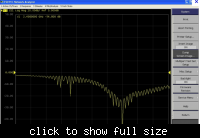robismyname
Full Member level 6
- Joined
- Jan 17, 2008
- Messages
- 390
- Helped
- 11
- Reputation
- 22
- Reaction score
- 9
- Trophy points
- 1,298
- Location
- Central Florida
- Activity points
- 4,603
A standing wave consist of traveling waves of both voltage and current so why is there only terminology related to vswr and not current standing wave ratio (cswr)?
Standing waves are caused by the combination of incident and reflected waves on a transmission line? It appears from my studies that the amplitude of the incident and reflected signal resultant wave depends on the phase of the incident and reflected voltage signal. So if the reflected and incident wave are the same the resultant wave is at its maximum. My question is what is the significance and/or ramifications of having a incident wave combine with a reflected wave to create a resultant wave? If my match between the transmission is pretty close to ideal the resultant wave that occurs between the incident wave and reflected wave will be negligible? What is the ramification of having standing waves? What impact does it have?
Is there a relationship between the reflection coefficient and vswr and standing waves?
Standing waves are caused by the combination of incident and reflected waves on a transmission line? It appears from my studies that the amplitude of the incident and reflected signal resultant wave depends on the phase of the incident and reflected voltage signal. So if the reflected and incident wave are the same the resultant wave is at its maximum. My question is what is the significance and/or ramifications of having a incident wave combine with a reflected wave to create a resultant wave? If my match between the transmission is pretty close to ideal the resultant wave that occurs between the incident wave and reflected wave will be negligible? What is the ramification of having standing waves? What impact does it have?
Is there a relationship between the reflection coefficient and vswr and standing waves?
